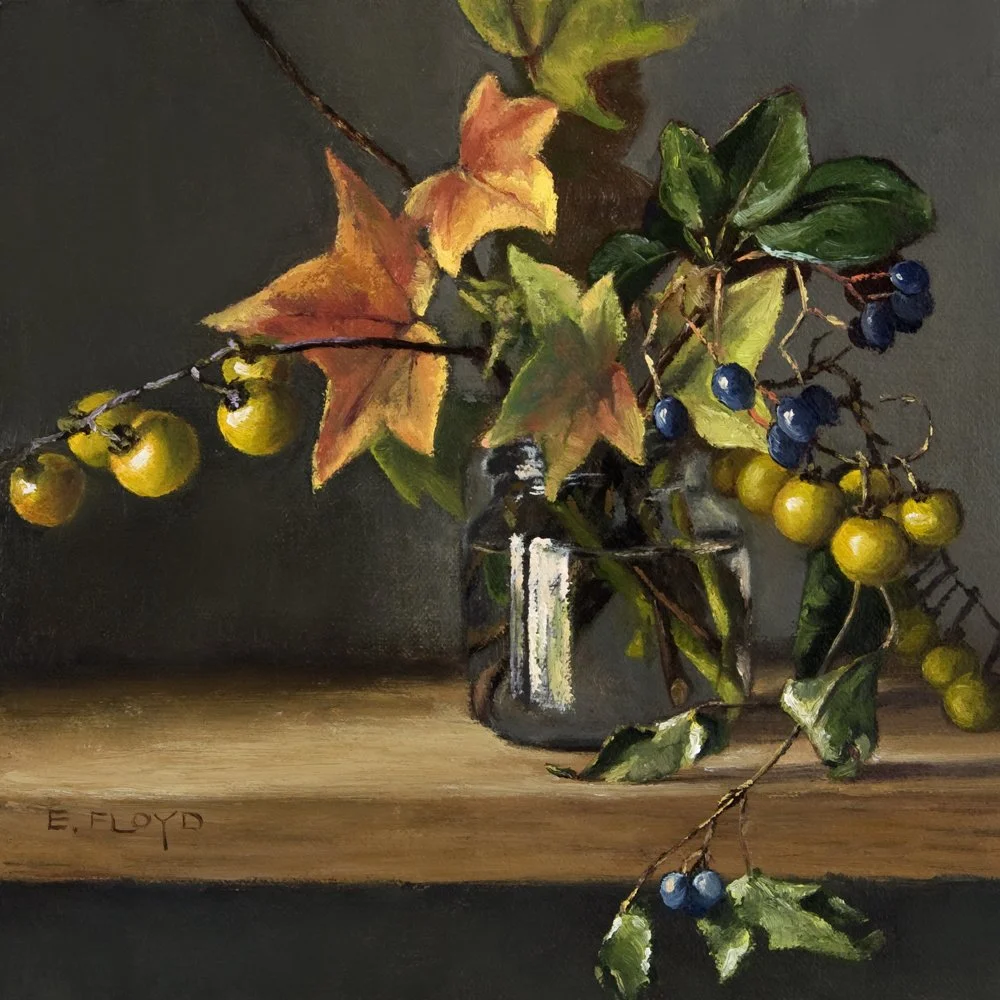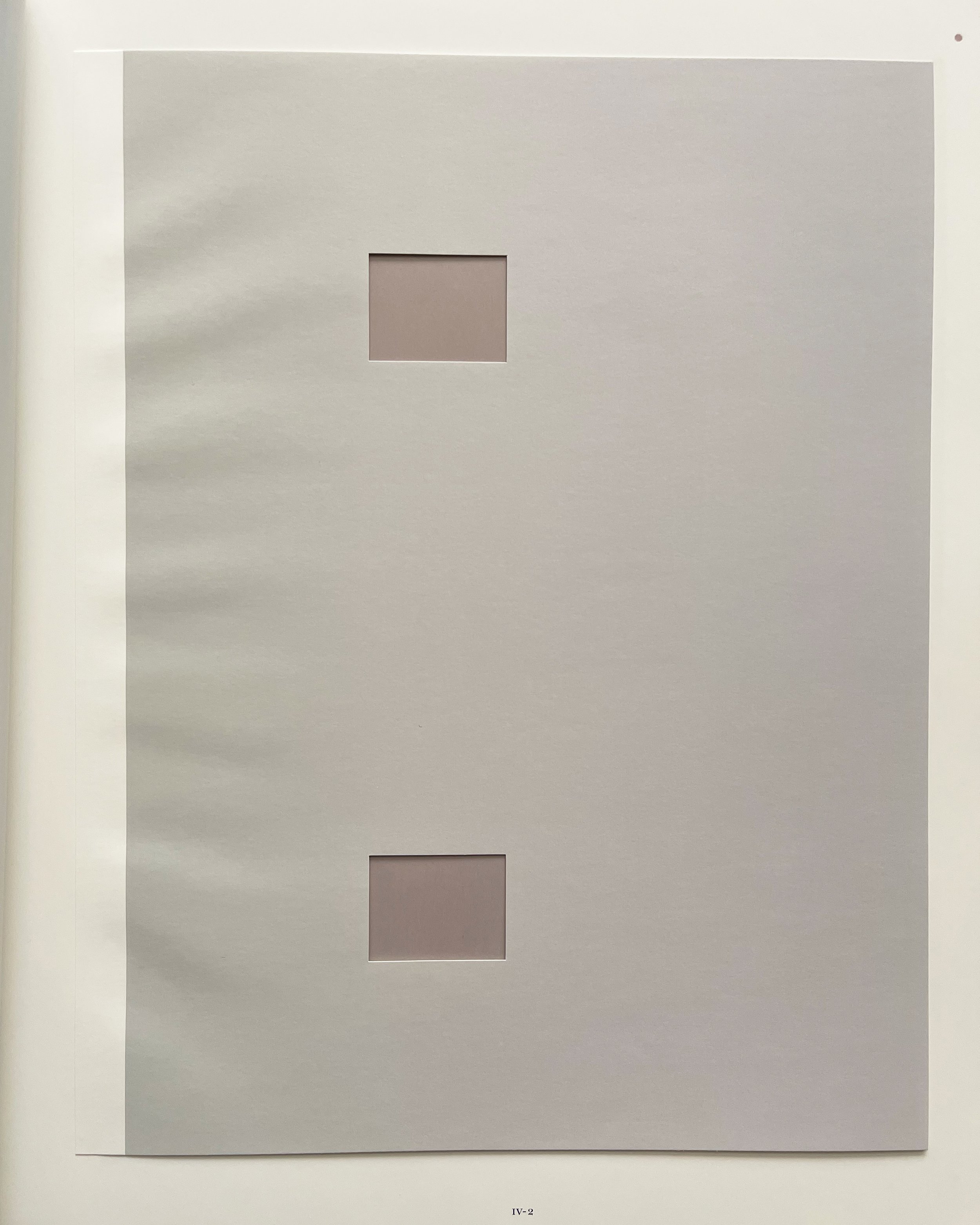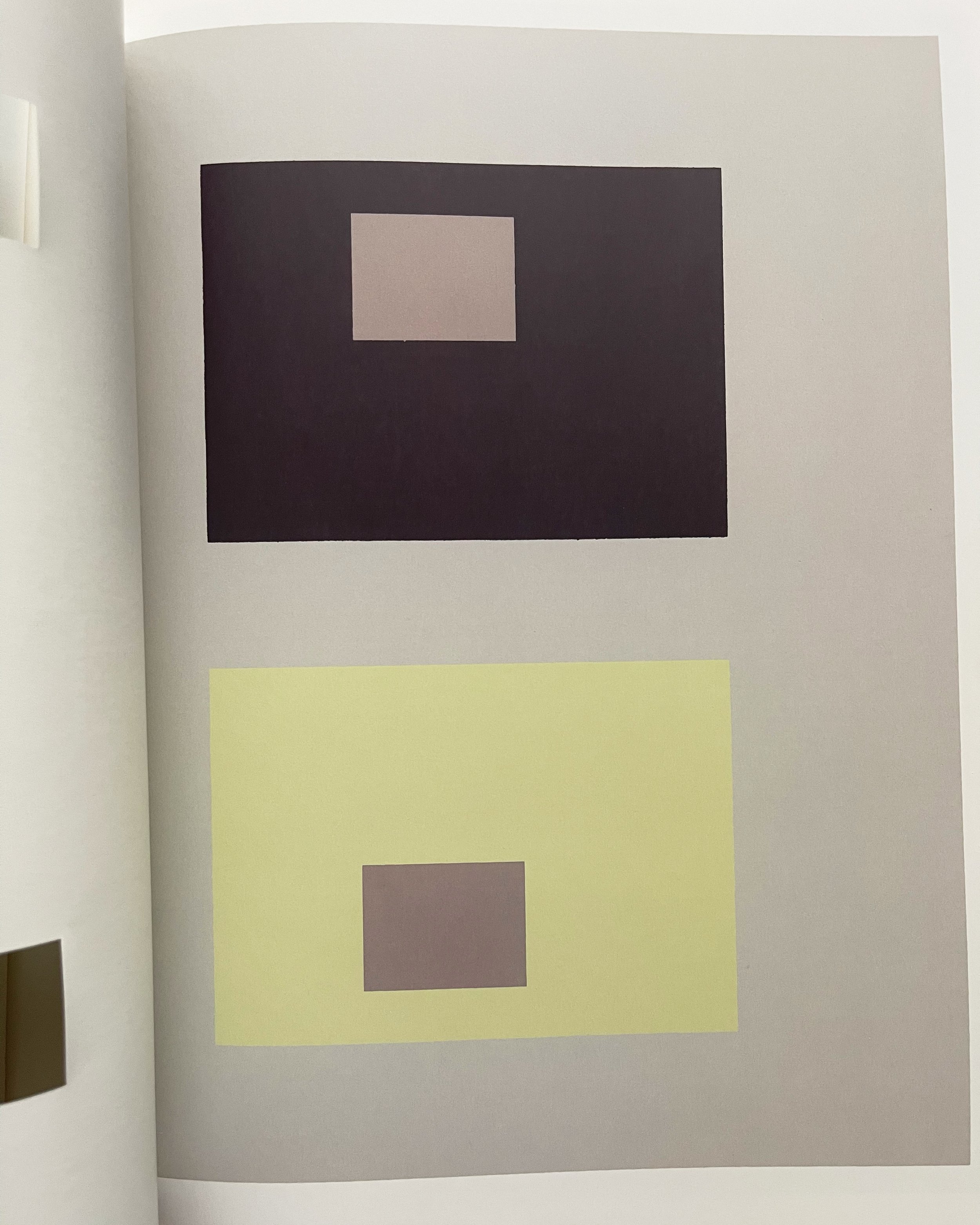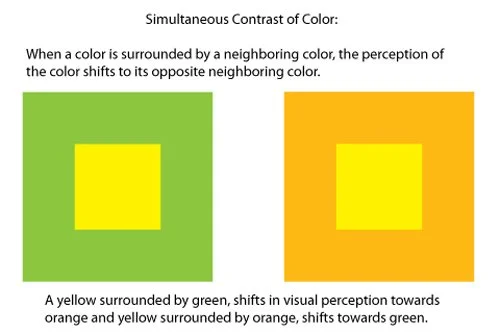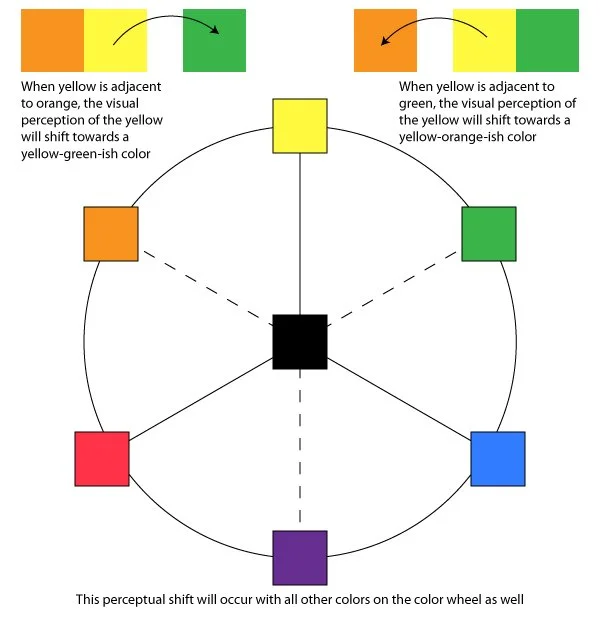What is Simultaneous Contrast of Color?
Simultaneous contrast is not just a curious optical phenomenon — it is the very heart of painting. ~ Josef Albers, author of Interaction of Color
This painting of Autumn leaves is an excellent example of where I used the concept of emphasizing the visual effects of simultaneous contrast of color.
In the broad sense of art, the use of color distinguishes a painting from a drawing. If a painting is about color, then the whole art of painting is found in the visual effects created by simultaneous contrast, which is the mutual effect that adjacent colors exert on each other. The perception of color temperature, value, or saturation influences the color temperature, value, and/or saturation of the adjacent colors is next to.
Check out these images from Josef Albers book, it show two gray squares, when surrounded by the same color, they look the same, but then when these same gray squares are surrounded by different colors, their visual perception shifts.
Color plates from Interaction of Color by Josef Albers
In painting, every relationship is an adjacent relationship because each color lies flat on the two dimensional surface of the picture plane, and each color also lies next to another color. Each color’s relationship with its neighbor reads both horizontally and vertically, and no matter how effective the illusion of three dimensional space is, each color mass is just laying beside another color mass.
And this is where understanding how to utilize the law of simultaneous contrast is important, because there will be times when you want to emphasize the differences in colors (such as trying to get an object to move forward in the picture plane) and other times when you want to minimize the visual effect (such as trying to make a space seem more flat and shallow).
The effect of simultaneous contrast can be emphasized by exaggerating the color shifts to alter how the colors are perceived. Also the effect can be minimized by shifting the adjacent colors towards each other.
I taught a class that focused exclusively on the concept of simultaneous contrast of color with three specific lessons.
The first lesson was all about becoming aware of the visual influence this concept has on our color choices. The second color lesson focused on how to emphasize or deemphasize the visual impact of adjacent color shapes in your painting, and the third color lesson explored simultaneous contrast of color and secondary color characteristics that influence color mixing ideas.
With each color theory lesson, there is a second class devoted to creating a floral still-life painting that incorporates the specific concept into our painting process. This way you learn these concepts deeply.
This class is part of the Painting Flowers with Liz membership. Where you can learn at your own pace.
This membership is about growing your skills at art making, cultivating your love of the art you create, and sharing it with the world.
Painting Flowers with Liz Membership
Great for beginners and experienced painters! Paint at your own pace. Unlimited access to all pre-recorded videos immediately.
What You will Learn Inside the Membership
A mixture of painting fundamentals, techniques, and mindset tips
Painting Fundamentals
These are the four aspects found in all great art
Good Compositional principals that engage the eye and mind of the viewer
Correct values and a harmonious tonal quality
Effective use of Edge Quality to help guide the eye of the viewer though the painting
Color Theory
Painting Techniques
The areas of when you put paint brush to canvas
Color mixing and avoiding confusion when mixing for a specific color
Brushstroke techniques
Selecting the correct painting support. Do you choose linen, or cotton duck, or a panel?
Understanding the characteristics of the paint pigments and how it affects the end result of your painting
Transparent paint techniques, glazing techniques
Building up thick layers of paint, impasto painting
Choosing the right type of painting method for your project, alla prima or indirect or a variation of them both
Mindset Tips
Creating art is rewarding, however it can also be mentally difficult. Having the right mindset and tools to keep going make all the difference.
Clean creating, how to create art that is unique you without the negative influence of others
Finding Inspiration and staying connected when life is really busy and pulling you away from art
How to discover your artistic voice and let it shine
How to share your art with world with confidence
How to feel proud about the work you are creating now, knowing you also want to improve in areas. You can have it both ways, I promise because that is how I create everyday.
